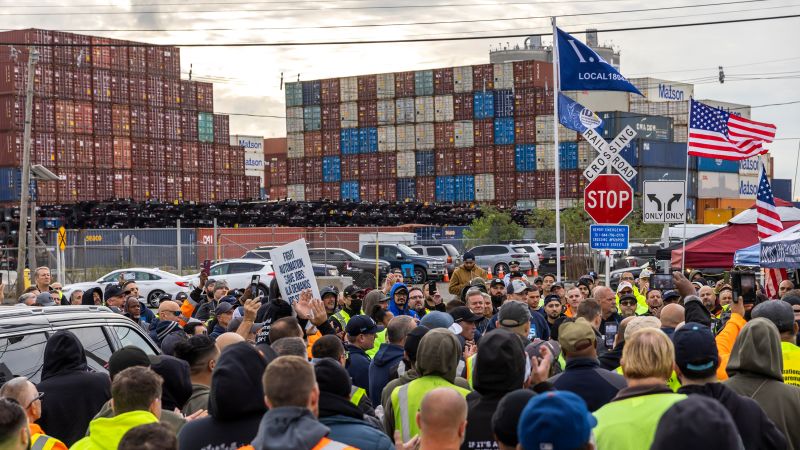
Dockworkers are waging a battle against automation. The rest of us may want to take notes
CNN
The dockworkers striking up and down the East Coast are, culturally and geographically, a world apart from the Hollywood actors and writers who staged a four-month walkout last year. But their protests share a common core principle: They don’t want bots taking their jobs.
The dockworkers striking up and down the East Coast are, culturally and geographically, a world apart from the Hollywood actors and writers who staged a four-month walkout last year. But their protests share a common core principle: They don’t want bots taking their jobs. It’s a fight you can expect to see playing out a lot more as advanced automation and AI creep into virtually every workforce. Here’s the deal: The East Coast port strike is getting a lot of attention for its potential disruption to the economy — which is precisely the point. Longshore work can be grueling, and the people working at ports are vital to getting all of the stuff we want to buy onto store shelves. No dockworkers means no bananas (or whatever), which means no profits for the companies that produce and ship them. The strike that began early Tuesday is about two main issues: wages and automation. Around the ports, workers can be seen wearing signs that read “robots don’t pay taxes” and “automation hurts families.” They’re fighting a trend that port operators largely want to see accelerate: more cranes and driverless trucks shuttling goods from container ships, with fewer humans around demanding compensation. Of course, the economics of automation aren’t so simple. While research shows automation has obvious benefits, like lower operating costs and fewer human-related errors, port automation does not, on its own, significantly improve performance, according to a 2018 McKinsey report.

Global stock markets have largely shrugged off President Donald Trump’s renewed tariff campaign. In commodities markets, however, tariff threats have sent the price of copper soaring to all-time highs — signaling the potential for higher tariff-induced prices for a metal with critical uses across the US economy.

This past April, when President Donald Trump started flirting with the notion of firing Fed Chair Jerome Powell, stocks and the dollar tumbled because investors worried that even talking about such a move crossed a red line. You can’t even joke about that, the Wall Street intellectuals told us — the central bank’s independence is simply too important.





















 Run 3 Space | Play Space Running Game
Run 3 Space | Play Space Running Game Traffic Jam 3D | Online Racing Game
Traffic Jam 3D | Online Racing Game Duck Hunt | Play Old Classic Game
Duck Hunt | Play Old Classic Game









